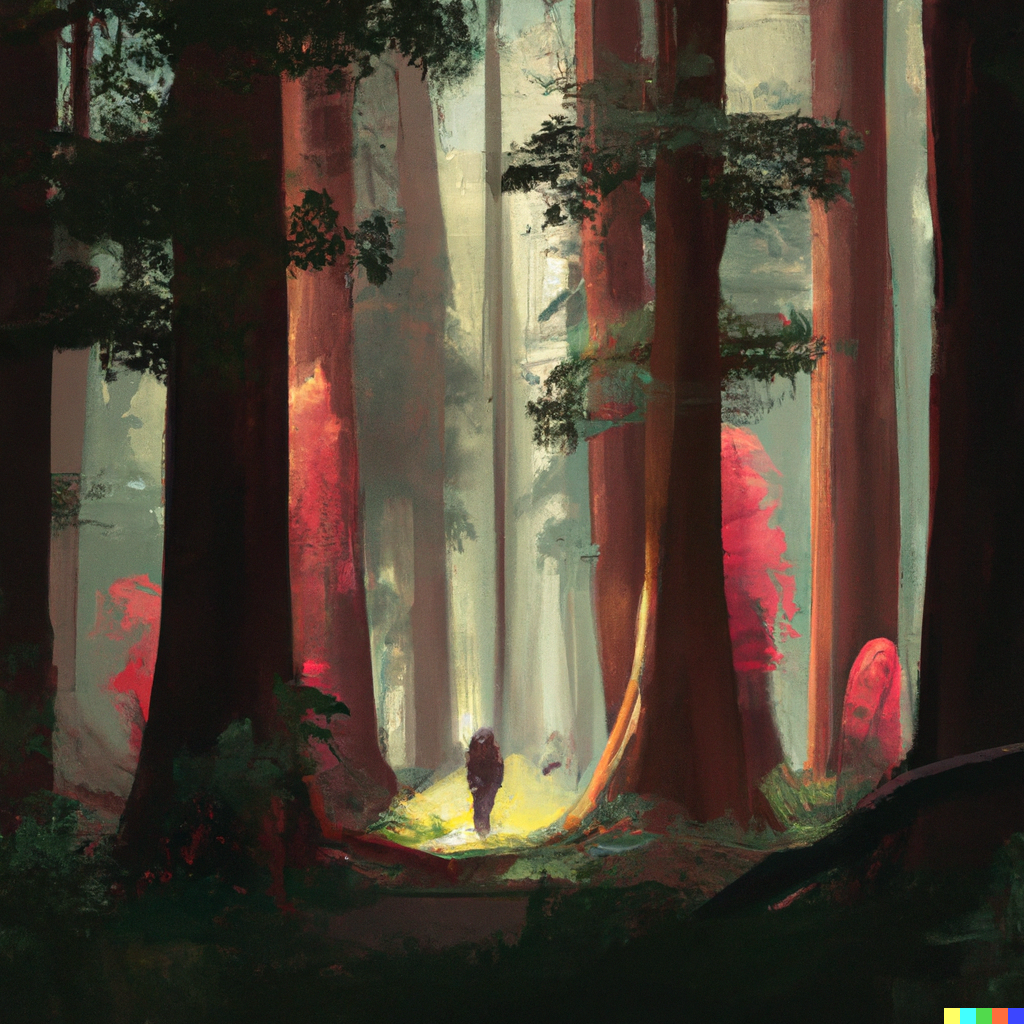The Insider - November 2022
On my next professional step, generative AI, our inability to build, and the power of honesty in art.

Hi everyone,
Welcome to the November edition of the Insider. Do you know someone who would enjoy the Insider? Forward this email to them and they can subscribe here.
On My Next Step
I spent the majority of my sabbatical thinking about our planet and my relationship to it. I walked in the old growth forests of the pacific northwest. I listened to the alpine birds in the early morning outside my tent in Colorado. I talked to experts in climate tech, followed the passage of the Inflation Reduction Act, and did research into carbon markets. Through it all, a conviction began to form that I wanted to dedicate my next professional step to building a healthier planet.
That’s why I am joining Ezra Climate, a company that builds fintech companies and platforms that accelerate the deployment of capital into climate solutions. The transition from fossil-fuels to clean energy is considered by many to be the next industrial revolution. The scale and speed of this revolution will depend on financial infrastructure—from fintech software to financial products to investment vehicles—that enables climate technologies like solar, wind, and battery storage to gain widespread adoption.
I’ve joined as their Head of Venture Development, which means I’ll be responsible for the early stages of researching, scouting, ideating, and prototyping early-stage venture concepts. Unlike Uncharted, where we sourced exceptional entrepreneurs who were already leading existing companies, Ezra builds de novo fintech companies. This means we’re launching only a small handful of new companies each year, capitalizing them through their early life cycle, and then building management teams to take them to scale. It’s an exceptional team, and I’m honored to join. If you want to follow along, sign up for the monthly Ezra Digest at the bottom of the page (curated by yours truly).
On Generative AI
I’ve been playing around with generative AI models and I’m stunned by the power of this technology to change the way humans partner with computers to create and produce original works. Unlike analytical AI that analyzes vast amounts of existing data, generative AI creates new things. You can give it a prompt, and it will generate a paragraph. You can feed it text, and it will create an image—the image at the top of this Insider is the product of a prompt I gave OpenAI’s DALL-E 2: “a human walking amidst the redwoods, digital art”. Entire jobs, industries, and tasks will become computer-assisted in ways that weren’t possible before. Lawyers will use AI to draft contracts, consultants will use AI to assemble qualitative analyses, and students are already using AI to write papers in school, which they then augment with additional citations and further explanation.
What’s most intriguing to me about generative AI are the questions it raises about what is original. Is it more original for us to paint with oil and canvas than it is to collaborate with a computer to create a painting? And if we acknowledge that the inspiration for our oil-and-canvas painting was derived from the millions of inputs from our experience (the art we’ve seen in museums, the books we’ve read, our understanding of beauty), then do we have any claim of originality of the finished product?
On Our Inability to Build
Less than 100 years ago, it took only one year to build the Empire State Building, and only four years to erect the Golden Gate Bridge. The Hoover Dam was supposed to take seven years, but was completed ahead of schedule in five. Today, major infrastructure projects are slower and more expensive than ever. California’s high-speed rail was approved by voters in 2008 and slated to be done by 2020, but currently it’s mired in political turmoil, billions of dollars over budget, and not even close to being done. The US is the sixth most expensive country in the world to build rapid transit infrastructure like rails and subways. Between 1990 and 2008, the cost of building one mile of interstate highway in our country increased by 5x.
Why does it cost so much to build? In my brief research, there are numerous factors. We’ve put power and voice in the hands of small groups of neighbors (often wealthy, often NIMBYs) who are skilled at stalling progress with laborious environmental reviews. We’ve hollowed out the staff and expertise inside government agencies. We’re out of practice compared with our Asian and European peers who build big stuff more often, and we’ve developed complex, multi-stakeholder processes that produce sclerosis, not progress. The specific mix of contributing factors is different based on the community and the project, but the result is often the same: we’ve lost our ability to build important, necessary things.
I’m curious about the parallels between the factors that slow things down in physical infrastructure projects and the factors that grind progress to a halt inside organizations. I also wonder about the impact on society's talent allocation—are so many young and brilliant minds focusing on building virtual worlds and tech products, specifically because building physical things is so maddeningly slow and hard? And finally, if we truly are at the beginning of the next industrial revolution in our transition to a decarbonized economy, then what needs to happen to make such an industrial, built-world revolution possible? I am planning to do more research and writing on this topic, and I’d love to learn from others with unique perspectives.
Can you help?
- What’s the best book you’ve read this year?
- Who has practice building a “second brain”? I am looking for best practices about how to categorize learnings, document online resources and articles, and amplify my creativity.
What I am reading
- The last few years have been a stage for some of the biggest upheavals in how we work, where we work, and new working norms. The war to define what work looks like. The Wall Street Journal.
- The rapid transition to electric cars is wreaking environmental and social havoc in places like Indonesia. Clean energy, rare earth metals, and suffering communities. Rest of the World.
- Teens are using TikTok to self-diagnose their own mental health disorders and conditions. How mental health issues are becoming personality features instead of something to be treated. The New York Times.
- The multi-part (long-form) story of crypto, as told by Matt Levine, one of the best financial journalists of our time. Bloomberg.
- Should we try solar geoengineering? The immense risk of playing god, and the desperation of those considering it. The New Yorker.
What I am writing
- Substack: How should we think about the FTX collapse?
- Quartz: Reduce burnout and increase collaboration with 5 company actions
- Quartz: Four ways to take back control of your time in the workplace
- Quartz: How leaders can become more effective at delegation
- I write a newsletter for leaders with practical guides and insights into the future of work. You can subscribe here.
Something personal
In New York a few weeks ago, I went to the play “Death of a Salesman,” originally written by Arthur Miller in 1949 and now back on Broadway. The play is a tragedy, chronicling the slow unraveling of a man and the ensuing wreckage of his family as he grapples with the loneliness of his profession, the stress of making ends meet, the past mistakes that are sewn into his family’s future, and the high hopes his identity is pinned to. At its core, it is a play about how hard it is to be good in a world that doesn’t make it easy for those who want to be good.
I think it’s one of the most honest pieces of art I’ve ever seen, and it’s made me reflect on the power of honesty in art. When Van Gogh’s self-portrait stares back at you—his ear cut off and bandaged—it’s the honesty of it all that’s so arresting. The same is true when Luciano Pavarotti is caught off guard by the emotion and weight of his own performance when singing Nessun dorma with the L.A. Philharmonic, or when you read Mary Oliver’s poem “The Journey” and you know that beneath such honest words, there is so much life that was lived. When our art conceals nothing, when it doesn’t try to tell us anything other than the raw yet redeemable truth, that’s when it can pierce us, that’s when it can reach us.
~~~~
Signed,
Banks
